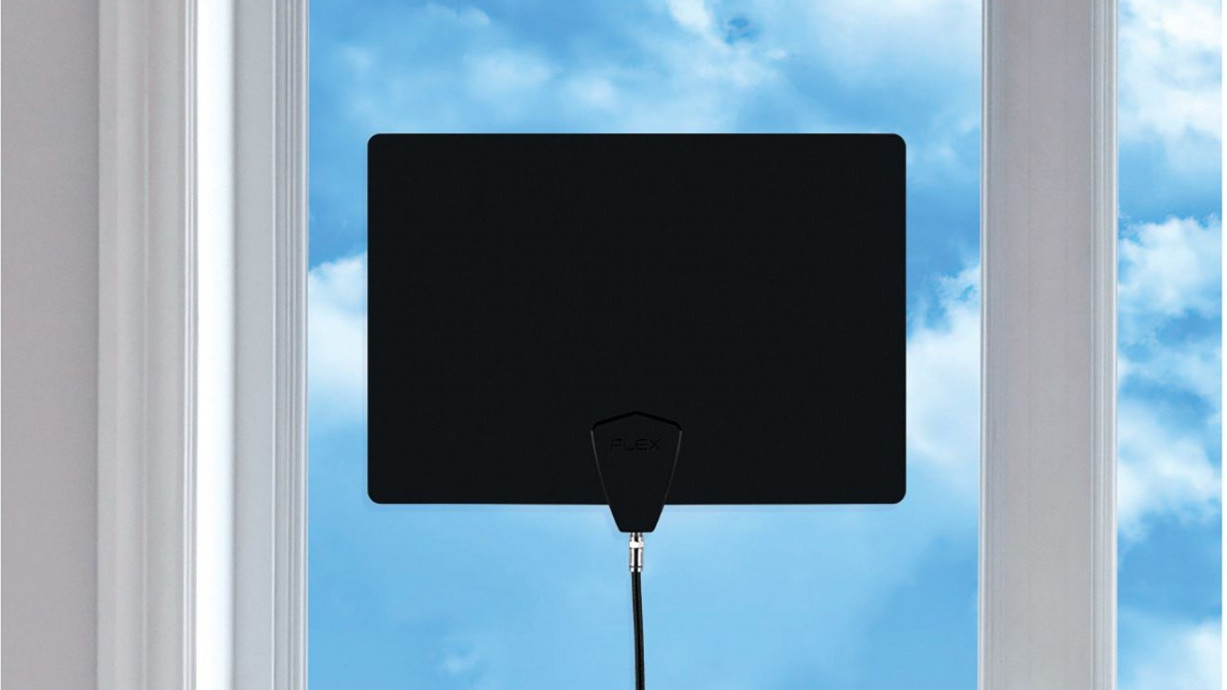TechRadar Verdict
The Antennas Direct Clearstream Flex indoor antenna offers rock-solid 50-mile radius reception for local digital channels at a lower price than some of its competitors. Its not very compact and you may not be able to grab as many channels as you could with more powerful models - but, if you’re relatively close to town, the Clearstream Flex should be more than enough for you.
Pros
- +
In-line amplifier with on/off switch
- +
Antenna Point app
Cons
- -
Potentially fewer channels
- -
Wide, full window design
Why you can trust TechRadar
30-second review
Antennas Direct now owns rival OTA antenna retailer Mohu, but that hasn’t stopped the company from putting out some strong HD indoor antennas of its own. For example, you need look no further than the new Antennas Direct Clearstream Flex.
Offering up a 50-mile radius of coverage and powered by an in-line amplifier, the Flex is able to deliver much of your area’s local channels in clear HD without much of a struggle.
For first-time HD antenna owners, Antennas Direct encourages you to download the free Antenna Point app that shows you where cable stations are geographically, and can then help you point your antenna in the right direction for the best possible signal.
There are a few sticking points that we don’t love about the antenna including its window-filling size and potential to pull in fewer channels than other stronger models - but overall these are minor points that don’t mar the performance of this above-par antenna.
Design
Like the Mohu Leaf Supreme Pro that we've reviewed previously, the Flex is a large, flat digital antenna that has a white side and a black side that can help it blend in with your living room décor. It’s best placed next to or on a window with direct visibility to the outside world, though you can place it up in an attic if you want to split the signal to go to multiple rooms.
At 12x16 inches (LxW) it’s not exactly the most inconspicuous antenna we’ve yet to test - which some design-conscious folks may take umbrage with - but its massive footprint does help it pull in more channels when it’s positioned correctly.
How will you know if it's in the right position, you ask? Antennas Direct actually offers an app called Antenna Point on iOS and Android that allows you to see where TV broadcasters are in your area and help point your antenna in the right direction. Once you’ve got your antenna placed in the right spot, then you can run a scan on your TV to lock in the stations.
Sign up for breaking news, reviews, opinion, top tech deals, and more.
The Flex comes with a 15db in-line amplifier called the Volt Switch that can strengthen the reception of your antenna. Depending on your proximity to broadcasters, you may not actually need it, and thankfully Antennas Direct built an on/off switch into the Volt Switch to turn it off should you find it unnecessary.
Last but not least, to connect the antenna to the amplifier the Flex comes with a 12-foot detachable coaxial cable. That length of wire should give you plenty of slack to reach the windows from a TV - and it feels like a premium addition compared to cheaper models that only come with a one-to-two foot coaxial cord.

Performance
The overall performance of the Clearstream Flex is middling: with previous HD antennas we were able to pull in around 54 digital channels based on where we live but, by contrast, the Flex could only pull in around 48 of those channels, though we felt many of them came in just as well as with other, more-powerful models.
According to Antennas Direct, the Flex has around a 50-mile radius when using the power booster. That’s a real step up compared to the cheaper 30-mile radius antenna that we were using previously - but even that was able to pull in all 54 channels we’ve seen previously.
The good news is that in terms of strength and clarity, most of the channels looked great. We counted 42 channels that were good clarity, over half of which were in HD. Eventually, some of those will switch over to 4K when more ATSC 3.0 stations become available.
Of course, your miles will vary in the performance department depending on how far away from broadcasters you live. Folks like us who live just a few miles outside of town in the suburbs should have no problems pulling in clear signals. However, if you’re much further out - say in a rural area between two major metropolitan cities - you won’t have as much luck. If you’re in the latter camp you may need something even stronger, like an outdoor amplified antenna instead of this basic indoor unit.
Should you buy the Antennas Direct Clearstream Flex?

Buy it if...
You’re not sure where TV broadcasters are in your area
With the Antenna Point app it’s incredibly easy to see where broadcasters are in your area and how to best place your antenna to get the best reception.
You need something in between something cheap and a top-end model
Look, not everyone needs the most powerful antenna - especially if you’re living close to a major metropolitan area. The Flex does a good job balancing price and performance, offering a middle-of-the-road HD antenna for folks who need one.
Don't buy it if...
You’re living far outside the city in a very rural area
While the 50-mile radius should work for suburban and semi-rural folks, anyone who’s really out in the middle of nowhere will need something stronger.
You live in a major metropolitan area
The counter-point there is that you also shouldn’t buy the Flex if you live too close to town, either. If you’re inside the city limits, the Flex is probably overkill.
- Ready to pick up a new TV? Don't miss our guide to the best TVs of 2022

Nick Pino is Managing Editor, TV and AV for TechRadar's sister site, Tom's Guide. Previously, he was the Senior Editor of Home Entertainment at TechRadar, covering TVs, headphones, speakers, video games, VR and streaming devices. He's also written for GamesRadar+, Official Xbox Magazine, PC Gamer and other outlets over the last decade, and he has a degree in computer science he's not using if anyone wants it.
